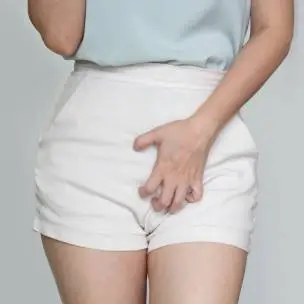Chronic Vulvar Itching or Vulvitis
Vulvitis refers to inflammation of the vulva, which includes the soft folds of skin surrounding the vagina, such as the clitoris, labia majora, and labia minora. Inflammation can occur due to various reasons, including allergic reactions, injuries, or infections, leading to discomfort and irritation. While vulvitis can affect women of all ages, it is more commonly seen in children and those going through menopause (GSM).
Symptoms of vulvitis include burning, itching, blisters, swelling, redness, vaginal discharge, and presence of whitish patches on the skin around the vulva.
Causes and risk factors of vulvitis can include the use of dyed or scented toilet paper, exposure to chlorinated water causing irritation, the use of certain laundry detergents, pads, pantyliners, and wearing wet pants. Treatment for vulvitis involves avoiding the risk factors that can cause vulva irritation, using recommended creams, and practicing regular sitz baths.
Please Note: First treat the vulvitis that you currently have by your doctor before undergoing these non-invasive procedures. They will help stop recurring vulvitis in the future.



Frequently Asked Questions
Vulvitis and vaginitis are two different conditions. Vulvitis refers to inflammation on the outside of the body, specifically the vulva, while vaginitis refers to inflammation and infection of the vagina.
Vulvitis is typically not contagious unless it is caused by a bacterial infection. In cases where vulvitis is due to allergies or general skin irritation, it is not infectious.

Frequently Asked Questions
Vulvitis and vaginitis are two different conditions. Vulvitis refers to inflammation on the outside of the body, specifically the vulva, while vaginitis refers to inflammation and infection of the vagina.
Vulvitis is typically not contagious unless it is caused by a bacterial infection. In cases where vulvitis is due to allergies or general skin irritation, it is not infectious.


